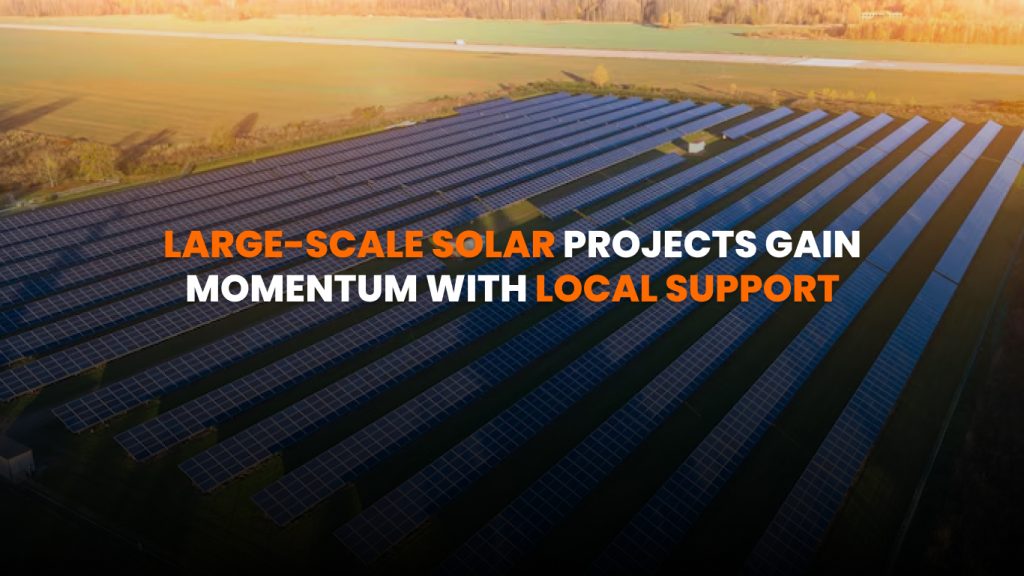Large-scale solar projects are increasingly finding support at the local level, challenging the longstanding “Not In My Backyard” (NIMBY) stigma that has often slowed renewable energy development across the United States. A recent study highlighted by Solar Power World reveals that many communities are now embracing utility-scale solar farms, recognizing their benefits for sustainability, economic growth, and energy security.
The research, published by Frontiers in Sustainable Energy, examines community attitudes toward large-scale solar installations and finds a marked shift from opposition to acceptance. This evolving perspective could accelerate solar deployment, which is crucial for meeting national clean energy targets and combating climate change.
Solar Power World cites the study’s key findings: “The research shows that residents living near large-scale solar projects increasingly view them as positive contributors to their communities, citing job creation, local revenue, and clean energy benefits.”
sunhub_products
Historically, large solar projects have faced resistance based on concerns about land use, aesthetics, and environmental impact. However, the study indicates that well-planned projects with transparent community engagement can overcome these hurdles. In fact, many locals recognize the value these projects bring in terms of economic opportunities and lowering carbon emissions.
“Residents are less likely to oppose solar farms when they see direct benefits, such as improved local infrastructure or investment in schools and public services funded by solar revenues,” the Frontiers report notes.
The shift is also linked to broader awareness of climate change risks and the need for a clean energy transition. Communities affected by extreme weather events are increasingly supportive of renewable energy projects that promise resilience and sustainability.
Solar Power World quotes lead researcher Dr. Emily Chen: “Our findings suggest that community opposition is not a fixed barrier. With appropriate planning, outreach, and benefit-sharing, solar projects can garner strong local support.”
The report highlights several examples where developers and local governments have successfully collaborated to ensure that solar farms integrate with community interests. These include co-developing land-use plans, offering educational programs about solar technology, and providing financial incentives or community investment funds.
Additionally, the study emphasizes the importance of siting solar projects on previously disturbed or less ecologically sensitive lands to minimize environmental impacts. This approach has been well-received by communities concerned about preserving natural habitats and farmland.
Solar Power World points out that this growing local acceptance comes at a critical time. The Biden administration has set ambitious goals to deploy solar power on a massive scale by 2030. Meeting these targets requires both technological innovation and public support.
“The willingness of communities to host large-scale solar projects could be a game-changer for the U.S. solar industry,” said Solar Power World editor Laura Rodriguez. “It signals a turning point where solar energy is seen not just as an environmental necessity but as a source of local economic vitality.”
The study also identifies challenges that remain, including navigating complex regulatory processes and ensuring equitable distribution of benefits. However, the positive trends in public opinion offer hope that these barriers can be addressed.
Looking ahead, Solar Power World reports that expanding community solar models and hybrid renewable projects combining solar with storage or agriculture may further enhance public acceptance.
In summary, the Frontiers in Sustainable Energy study, as covered by Solar Power World, underscores a significant cultural shift: “The era of widespread NIMBY resistance to large-scale solar may be ending, replaced by a new era of community partnership and shared prosperity.”
As the U.S. continues its clean energy transformation, this local backing will be essential to powering a sustainable future and meeting climate goals.

